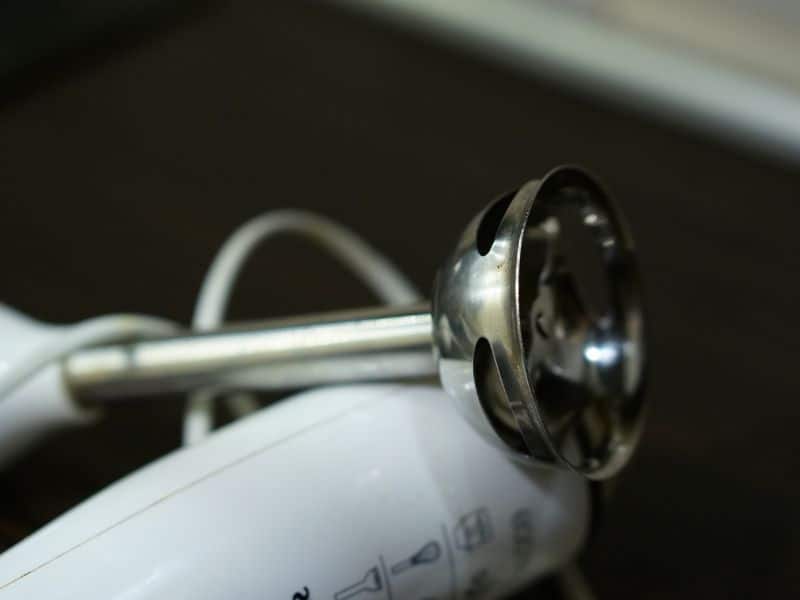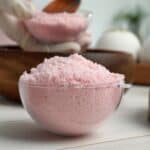Soap making can be a fun and creative process that yields beautiful and unique results. But one tool that many soap makers often overlook is the stick blender. Stick blenders are handheld electric devices that can be used to quickly and effectively mix soap ingredients together for better results in less time. In this blog post, we’ll explore what a stick blender is, why it’s beneficial for soap making, and tips on choosing the right one for your needs.
A stick blender, also known as an immersion blender, is an electric kitchen tool designed to blend or puree ingredients quickly and efficiently. It features a long, slim shaft with blades at the end of the shaft that allows it to blend ingredients directly in a pot or bowl.
The device typically has a motor at its base which powers the blending mechanism when activated. Compared to traditional methods of blending like using stand mixers or manually stirring by hand, using a stick blender can save you time while still giving you great results.
Click here to get the latest stick blender prices on Amazon
How Does A Stick Blender Work?
A stick blender works by agitating the soap ingredients when activated. This means that the blades at the end of the stick blender rapidly spin, creating a vortex within the mixture. This helps to combine all of the ingredients together more quickly and evenly than with traditional methods of stirring.
The stick blender can be used in different stages of soap making such as combining the lye and liquid oils, stick blending after adding fragrance or colorants, and stick blending to trace.
When it comes to stick blending, there are several benefits that make this tool a must-have for soap makers. It can help you save time by reducing the amount of stirring and stirring more effectively than manually. And stick blenders can also be used to create a smooth and creamy texture that’s perfect for making soaps with bubbles or suds. We will look a bit more at the benefits later.
Why Use A Stick Blender For Soap Making?
When it comes to making soaps from scratch, there are several steps involved which make it difficult to achieve consistent results every time. From mixing lye with water to melting fats for lard-based soaps, these processes all require precision and patience in order to succeed.
With its powerful blades and easy handling capabilities, a stick blender makes this process much easier by allowing you to swiftly blend your ingredients together without having to worry about overworking them or causing them to separate prematurely.
In addition, because stick blenders come with various speed settings you can adjust depending on what type of soap you are making (i.e., cold process versus hot process), they provide more control over the consistency of your soap batches than other methods would give you.
Tips for Choosing the Right Stick Blender for Your Needs
When selecting your stick blender for soap-making purposes, you will want to make sure that it has enough power (measured in watts) and speed settings for different types of recipes (e.g., cold process versus hot process).
Generally speaking, higher-powered models offer more speed options so keep this in mind when shopping around. Additionally, look out for any safety features such as auto shut-offs and non-slip grips that may help prevent accidents while using your device; this will ensure optimal safety while working with potentially hazardous materials like lye solutions, etc..
Finally, take into account additional features such as attachments (whisking attachment etc.) available with some models that could further aid your soap-making process by providing greater versatility compared to those without them
Benefits of Stick Blenders For Soap Making
Overall stick blenders are an incredibly useful and versatile tool that can help simplify the soap-making process while allowing you to create consistent results no matter what type of recipe you are using.
They offer increased speed, precision, and control over your ingredients while also allowing you to save time with their powerful blades. Finally, stick blenders come with a wide range of add-ons and accessories that can increase their versatility even further.
For all these reasons stick blenders are an invaluable tool for any soap maker who wants to make the most out of their craft and produce professional results every time.
Disadvantages of Stick Blenders For Soap Making
The main disadvantage of stick blenders is that they can be expensive and often require a certain level of technical knowledge to use correctly. Depending on the model, some stick blenders may also be too powerful for certain soap-making recipes which could lead to overmixing or separation of ingredients.
Finally, stick blenders are only suitable for smaller batches, so if you are looking to make larger quantities of soap, you may need to consider an alternative blending tool such as a stand mixer.
stick blenders offer many benefits for soap makers and can greatly simplify the process when used correctly. However be sure to weigh up the pros and cons before investing in one, to ensure that it is the right tool for your needs.
Stick Blender Alternatives For Soap Making
If stick blenders aren’t suitable for your set-up or you are looking to make larger batches, some other blending tools can help simplify the soap-making process.
Hand mixers are a great alternative for those who want more control when mixing ingredients and have limited counter space as they require less room than stick blenders and stand mixers.
Stand mixers are another popular option as they offer powerful motors, multiple speeds, and attachments that can make short work of even the most challenging recipes.
Finally, some mixers are specifically designed for soap making and may also be worth considering if you want to create professional-looking products with ease.
Whichever tool you choose, just remember that the key to successful soap-making is consistency and patience – stick blenders can help with the former, but you will still need to apply the latter.
Frequently Asked Questions
A stick blender is used for mixing and blending ingredients together in order to make soaps. They are versatile tools with powerful blades that can help simplify the process while providing greater control and precision over the consistency of your batches.
Stick blenders are typically designed for smaller batches and may not be suitable for larger quantities. If you are looking to make larger quantities of soap, you may need to consider an alternative blending tool such as a stand mixer.
When selecting your stick blender for soap-making purposes, you will want to make sure that it has enough power (measured in watts) and speed settings for different types of recipes (e.g., cold process versus hot process). Additionally, look out for any safety features such as auto shut-offs and non-slip grips that may help prevent accidents while using your device.
Conclusion
In conclusion, adding a powerful yet lightweight electric tool like a stick blender into your crafting arsenal could greatly benefit your soap production endeavors by helping reduce workloads while improving quality control compared to mixed methods involving manual stirring and whisking, etc.. With its enhanced speed settings and optional attachments available across different price points, there’s something out there suited perfectly for each individual’s needs whether beginner crafters just starting out or veteran artisans looking for something new to add functionality to their workspace!






